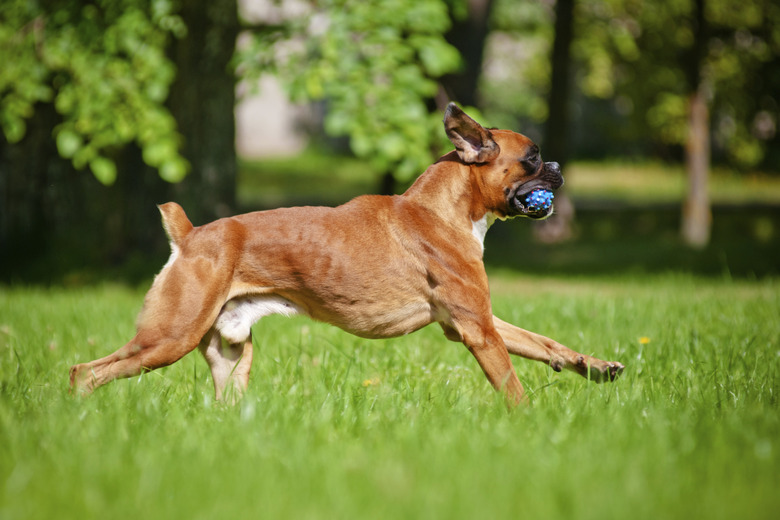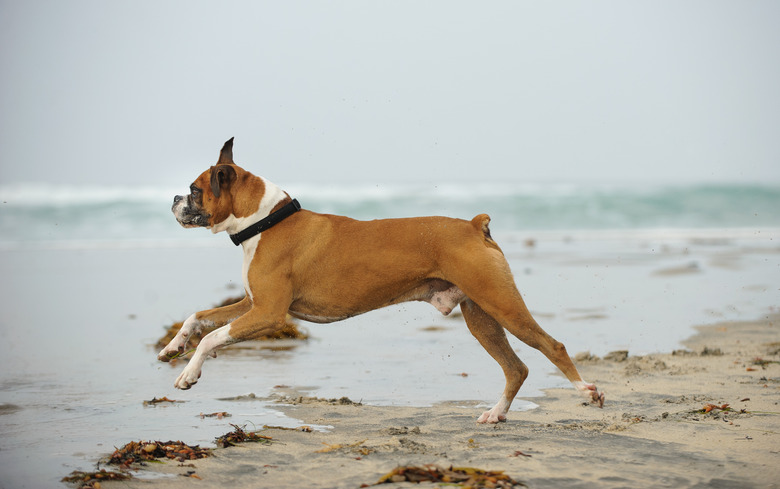Boxer With Tail Vs. Docked Boxer: Why Are Tails Cut On Boxer Dogs?
The boxer dog breed is categorized by the American Kennel Club under the working group and as several other dogs with a past as working dogs, their tail was docked for practical purposes. Despite the fact that many boxers today are kept as pets, the tail docking procedure, performed during the pup's first five days of life and without anesthesia, remains popular but for different purposes than originally meant.
Purpose of dog breeds with docked tails
Purpose of dog breeds with docked tails
Back in time, docking the boxer's tail had a precise purpose. Since boxers are part of the working class and have held all kinds of jobs — including acting as police or war dogs, service dogs, watchdogs, and hunters — their tails are sometimes docked to avoid risk of injury.
Used to hunt wild boar, deer, and bear and to hold them down until the hunters arrived, the boxer's ancestors traditionally were cropped and docked so large wild animals couldn't get a hold of them. Years later, when boxers were used as guardians, their ears and tails were still cropped and docked but this time to prevent intruders from grabbing on to them.
Boxers are not the only dog breeds with docked tails. Other breeds, like pit bulls and Rottweilers, have also had docked tails.
Boxer tails docked for breed standards
Boxer tails docked for breed standards
Now, the boxer tail is often docked to adhere to the American Kennel Club's standard. According to the breed standard, the boxer's tail must be set high, carried upward, and docked. Should a boxer present in the show ring with an intact, full-length tail, the American Kennel Club may severely penalize them.
Boxer tails docked for cosmetic reasons
Boxer tails docked for cosmetic reasons
While tails in show-quality boxers are often docked to conform to breed standard and avoid severe penalization, tail docking can also be a cosmetic choice. By docking tails, fanciers create a distinctive appearance while perpetuating a tradition. However, tail docking for cosmetic reasons is a controversial topic among dog owners and veterinarians. Many veterinarians refuse to do tail docking.
Medical reasons for tail removal
Medical reasons for tail removal
Happy tail, a medical condition where the tails of short-coated dogs with exuberant temperaments become injured repeatedly by banging against a wall or crate, is often cited as a reason for docking a boxer's tail. Left natural, the boxer's tail may grow too long and narrow and making it prone to injury.
However, when a dog's tail is removed for medical reasons, it's considered amputation or partial amputation — not tail docking.
The AVMA opposes docking
The AVMA opposes docking
The American Veterinary Medical Association opposes tail docking of dogs done solely for cosmetic purposes and encourages the removal of tail docking from breed standards. The procedure, which involves cutting through nerves, tendons, muscle, and sometimes bone or cartilage, is painful for dogs. Additionally, dogs must undergo general anesthesia, surgery, and recovery time, which means there's the risk of medical complications. As docking provides no obvious benefits to the dog, which relies on its tail for communication purposes, balance, and stabilization of the vertebral column, the AVMA believes there is not enough justification for the practice.
The legality of tail docking
The legality of tail docking
In the United States, it is legal to dock dog's tails. Only two states, Maryland, and Pennsylvania, have legal restrictions on tail docking. Maryland only allows veterinarians to perform the procedure when appropriate. Pennsylvania doesn't allow tail docking procedures when a puppy is between five days and 12 weeks old unless a veterinarian determines it medically necessary.
Internationally, the tail docking procedure is banned and restricted in many countries. Cosmetic tail docking has been banned in Turkey, the Netherlands, Sweden, Germany, and many other countries. Breed standards have been changed to reflect these changes. The United Kennel Club allows a natural tail as long as it's in balance with the dog and a normal length.


